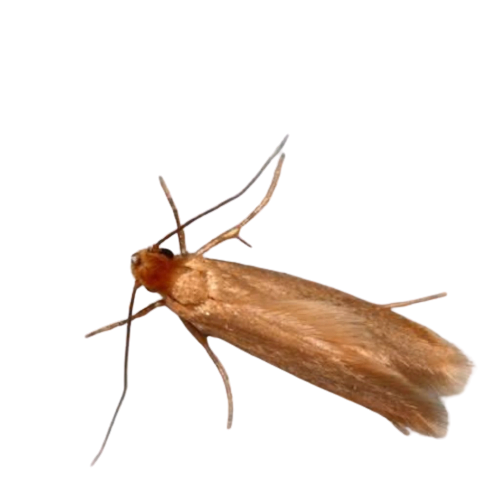
What actually are Textile Pests ?
Textile pests are considered a nuisance as they damage clothes and fabrics often found in wardrobes and attics. Some common textile pests include moths, carpet beetles, and silverfish. These pests enter garments through small openings and make their home there. They typically feed on fibers such as wool, silk, and cotton, causing damage to your clothing.
This can be emotionally distressing, especially when they ruin your favorite attire. To protect your garments from these Pesky creatures it is important to clean your wardrobes, regularly or twice in a week. If you face severe issues contacting a pest control will help to solve the issue effectively.
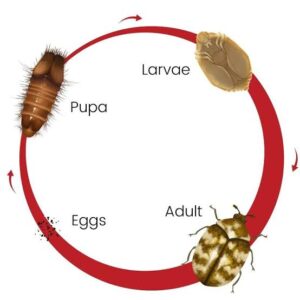
Life Cycle of common Textile Pests
Textile pests, like clothes moths and carpet beetles, undergo a distinct lifecycle. They start as eggs laid on natural fibers, progress into larvae that feed on these materials, pupate into cocoons, and eventually emerge as adult insects.
Upon hatching, the eggs give rise to caterpillars during the larval stage. Caterpillars exhibit rapid growth during this phase and consume fabric for their growth and development.
After the larval stage, the caterpillar forms a cocoon around itself, entering the pupal stage. Significant transformations occur within the cocoon as the caterpillar undergoes metamorphosis.
The final stage sees the emergence of an adult pests comes out of the cocoon.
Types of Textile Pests
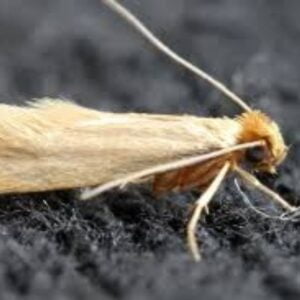
Clothes Moths
Clothes moths are tiny textile pests that can cause significant damage to clothing. They measure just a few millimeters in length, and it’s their larvae that are the real culprits. During their larval stage, they consume fabrics like wool and silk for their growth and development.
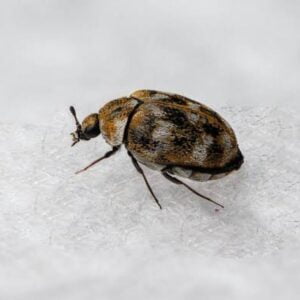
Carpet Beetles
As the name suggests, carpet beetles feed on carpets and clothing. The larvae of these textile pests have the potential to create severe damage to textiles if left unchecked.
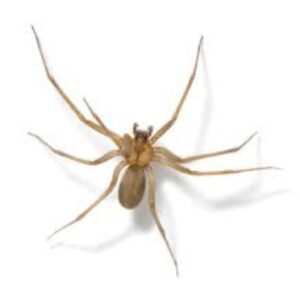
Common House Spiders
While not all spiders are textile pests, common house spiders are associated with textile damage. Spider webs can accumulate dust and dirt, which may stain fabrics. Regular cleaning and dusting to remove these webs can help prevent damage from house spiders.
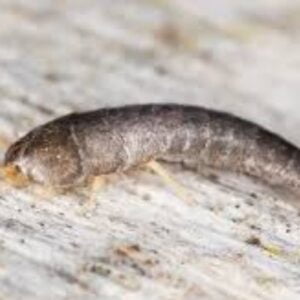
Silverfish
Silverfish are small wingless insects that feed on a variety of materials, including textiles.
They are often found in basements and wardrobes, where they can damage fabrics.
Overcoming Textile Pest Infestation
Textile pests, though small in size, can be significant nuisances that pose a threat to your garments. These tiny intruders, including moths and beetles, have a knack for infesting your closets and feasting on your costly clothing items. When your beloved attire falls victim to these pests, it’s not just the fabric they damage; they also emotionally weaken you. To combat this issue effectively, it’s crucial to seek professional pest control services.
In Dubai, Al Rasa pest control services stand out as experts in eradicating textile pests. Their dedicated team employs measures that efficiently eliminate these pests, ensuring the safety and longevity of your wardrobe. Don’t let textile pests ruin your attire; trust Al Rasa to protect what you love.
Frequently Asked Questions
Textile pests are particularly drawn to fabrics like wool, silk, cotton, and linen, while synthetic fibers are less attractive to these pests.
To prevent textile pest infestations, consider storing your textiles in airtight containers, regularly cleaning and inspecting them, and using natural repellents such as cedarwood to deter pests.
Some textile pests can trigger allergies and skin irritations in certain individuals, and they can also cause damage to costly textiles.
The primary signs of a textile pest infestation include small holes or powdery residue on your textiles.
Some facts and information about Textile Pests
- Clothes moth larvae feed on fibers, causing irregular holes and damage.
- Textile pests can remain unnoticed for extended periods, often residing in concealed areas like wardrobes.
- Some cloth moths can detect and are attracted to specific chemical compounds found in human sweat, skin oils, and other organic substances.

The life cycle starts by laying minuscule eggs, on or near a textile source.